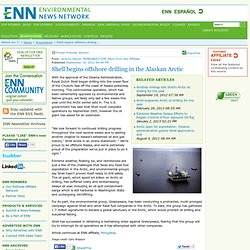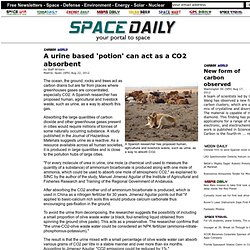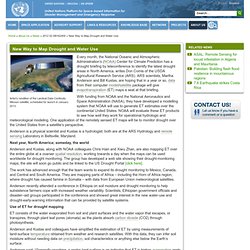

Shell begins offshore drilling in the Alaskan Arctic. With the approval of the Obama Administration, Royal Dutch Shell began drilling into the ocean floor of the Chukchi Sea off the coast of Alaska yesterday morning.

The controversial operation, which has been vehemently opposed by environmental and Native groups, will likely only last a few weeks this year until the Arctic winter sets in. The U.S. government has said that Shell must complete operations by September 24th, however the oil giant has asked for an extension. "We look forward to continued drilling progress throughout the next several weeks and to adding another chapter to Alaska’s esteemed oil and gas history," Shell wrote in an online statement. " We're proud to be offshore Alaska, and we're extremely proud of the preparation we've put in place to do it right. " Extreme weather, floating ice, and remoteness are just a few of the challenges that faces any fossil fuel exploitation in the Arctic, and environmental groups say Shell hasn't proven itself ready to drill safely.
A urine based 'potion' can act as a CO2 absorbent. The ocean, the ground, rocks and trees act as carbon drains but are far from places where greenhouses gases are concentrated, especially CO2.

A Spanish researcher has proposed human, agricultural and livestock waste, such as urine, as a way to absorb this gas. Absorbing the large quantities of carbon dioxide and other greenhouse gases present in cities would require millions of tonnes of some naturally occurring substance. A study published in the Journal of Hazardous Materials suggests urine as a reactive. As a resource available across all human societies, it is produced in large quantities and is close to the pollution hubs of large cities. New Way to Map Drought and Water Use. Artist’s rendition of the Landsat Data Continuity Mission satellite, scheduled for launch in January 2013.

Every month, the National Oceanic and Atmospheric Administration’s (NOAA) Center for Climate Prediction has a drought briefing by teleconference to identify the latest drought areas in North America, writes Don Comis of the USDA Agricultural Research Service (ARS). ARS scientists, Martha Anderson and Bill Kustas, are hoping that in a year or so, data from their computer model/satellite package will give evapotranspiration (ET) maps a seat at that briefing. With funding from NOAA and the National Aeronautics and Space Administration (NASA), they have developed a modelling system that NOAA will use to generate ET estimates over the continental United States. NOAA will evaluate these ET products to see how well they work for operational hydrologic and meteorological modeling. Papua New Guinea's seabed to be mined for gold and copper.
A "new frontier" in mining is set to be opened up by the underwater extraction of resources from the seabed off the coast of Papua New Guinea, despite vehement objections from environmentalists and local activists.

Canadian firm Nautilus Minerals has been granted a 20-year licence by the PNG government to commence the Solwara 1 project, the world's first commercial deep sea mining operation. Nautilus will mine an area 1.6km beneath the Bismarck Sea, 50km off the coast of the PNG island of New Britain. The ore extracted contains high-grade copper and gold. The project is being carefully watched by other mining companies keen to exploit opportunities beneath the waves.
The Deep Sea Mining (DSM) campaign, a coalition of groups opposing the PNG drilling, estimates that 1 million sq km of sea floor in the Asia-Pacific region is under exploration licence. Nyaba Leon Ouedraogo's best photograph: Ghana's computer dump. In January 2008, I went to Accra in Ghana to cover the African Cup of Nations.

While I was there, I met a taxi driver who wanted to show me something going on in the city other than football. So he took me to Agbogbloshie fruit and vegetable market, then led me to its fringes, where there is a "cemetery" of abandoned computers that stretches for 10km. People aged anything from 10 to 25 work there every day, burning electronic equipment that has been shipped in from America and Europe and dumped. GTSO Sees Big Profit Potential in Canada’s Growing Stream of E-waste. SAN JOSE, Calif.

--(BUSINESS WIRE)--Green Technology Solutions (OTCBB: GTSO) mining subsidiary GTSO Resources may be scouring Canada for new lithium excavation opportunities currently, but not all of the Great White North’s valuable resources are underground. The company also sees tremendous profit potential in Canada’s booming e-waste stream. “Canada is a major area of interest for our company right now due to both the lithium projects underway there as well as its underserved urban mining potential.” E-waste consists of unwanted, obsolete or broken computers and other electronic devices that are tossed out by consumers. Singapore’s Green-Roofed Marina Barrage Controls Flooding and Stores 10,000 Hectares of Rainwater. Singapore receives 100 inches of rain each year, making flood control and water supply preservation a big issue. The solution: an elegant, low-level dam, known as the Marina Barrage.
The Marina Barrage is the nation’s 15th reservoir, but it is the first in the heart of the city.